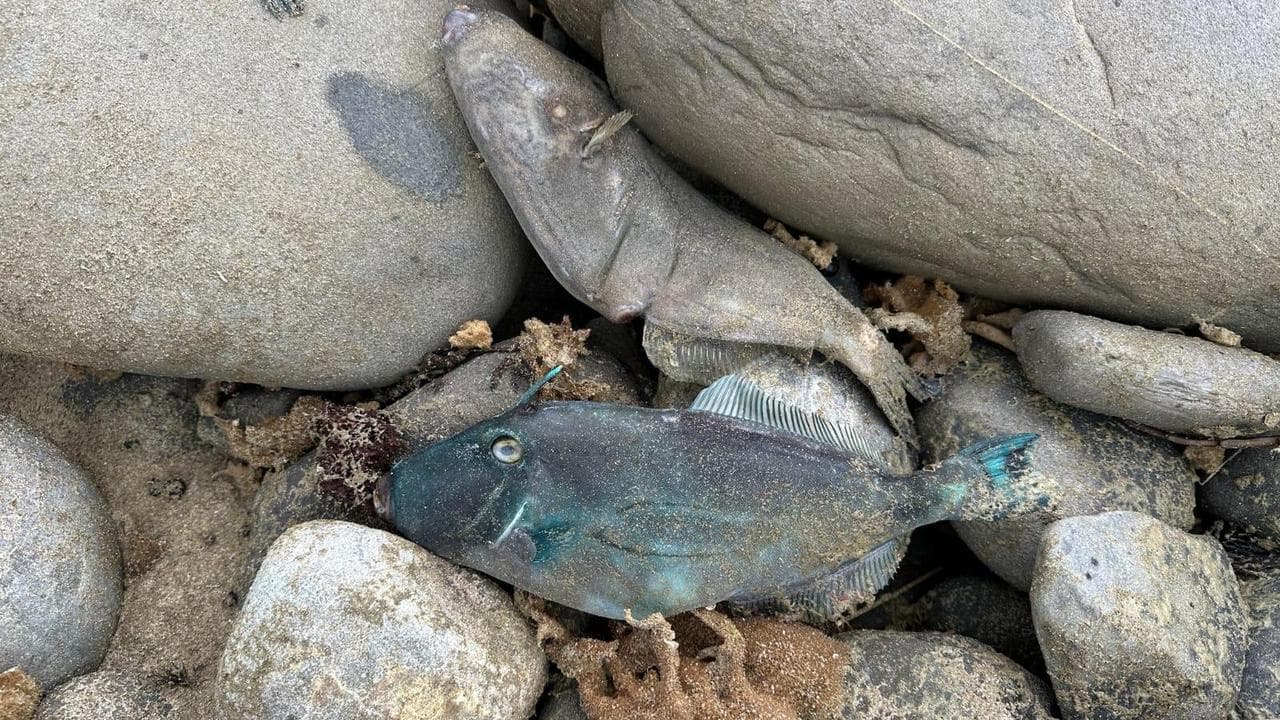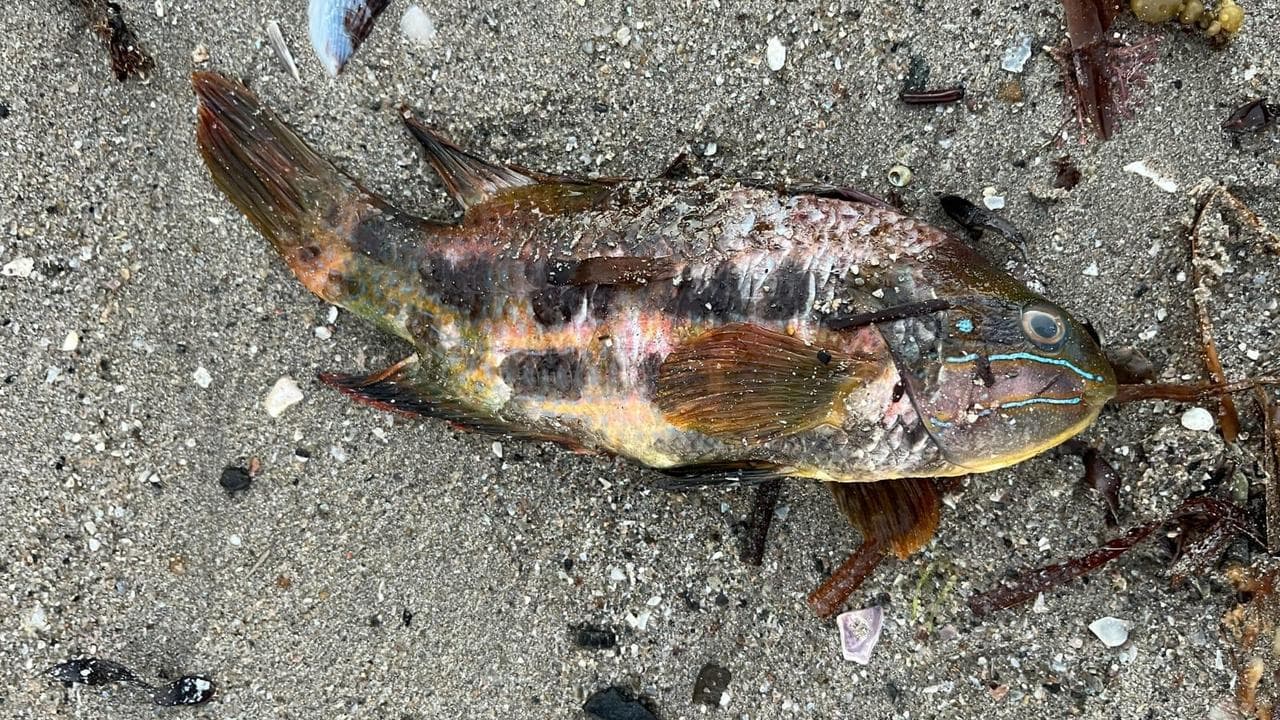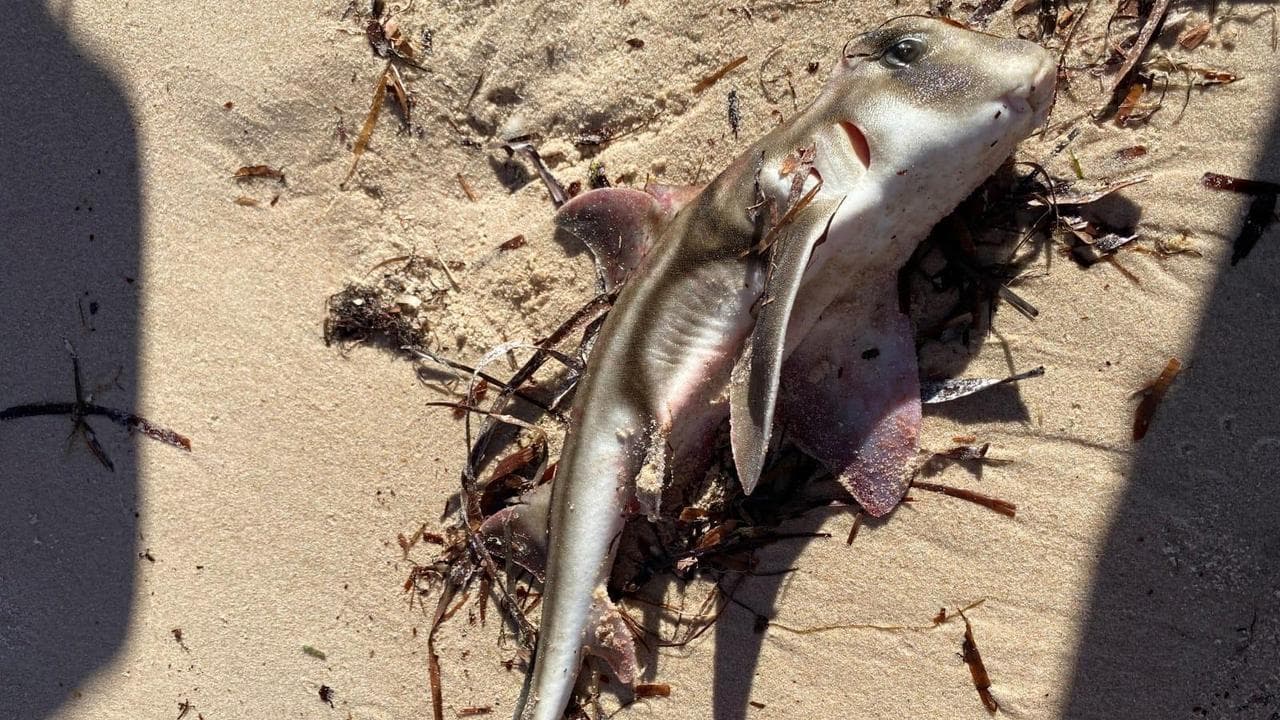
A massive, unstoppable, toxic algal bloom that has turned beaches into "marine graveyards" has prompted calls for a federal investigation.
The microalgae, karenia mikimotoi, was identified off South Australia's Fleurieu Peninsula in March.
The bloom grew to an unprecedented scale, close to the size of Kangaroo Island, at more than 4400 sq km, and as deep as 25m.
It's now breaking up and has spread into most of Gulf St Vincent, including along Adelaide's beaches and south into the Coorong wetlands.
There have been hundreds of reports of marine deaths, ranging from sharks and penguins to popular fishing species such as flathead, squid, crabs, and rock lobsters.
Greens senator Sarah Hanson-Young said the bloom was a horrific and heartbreaking "environmental catastrophe".

"When parliament resumes in two weeks time in Canberra, I will be moving for a federal parliamentary inquiry," she told reporters on Friday.
"We need proper investigation and proper federal support."
Beaches have become "graveyards" for marine species, and the fishing and tourism industries have been significantly impacted, she said.
Ms Hanson-Young claimed the federal government ignored warnings about the algae before it took hold.
"It is very concerning that the country's leading marine scientists have been ignored and dismissed," she said.
Experts believe there are three potential plausible contributing factors causing the bloom, the SA government said.
One is a marine heatwave that started in September 2024, with sea temperatures about 2.5°C warmer than usual, combined with calm conditions, light winds and small swells.
Another is the 2022-23 River Murray flood washing extra nutrients into the sea and an unprecedented cold-water upwelling in summer 2023-24 that brought nutrient-rich water to the surface.
SA Environment Minister Susan Close said the bloom had lasted longer than experts thought it would.
"Now that it's here, it's going to be hard to get rid of," she said.
"It's easy to feel helpless, because the bloom itself is something that we can't stop."

The SA government met with impacted commercial fishers, tourism operators and local councils about support packages.
"It's been very, very distressing for people, and it's affected people's livelihoods," Ms Close said.
The state government is also starting work on a recovery plan.
This could include creating artificial reefs to help build up marine life, restocking fish into the ocean and increasing the number of marine sanctuary zones along the coast.
"Although we're looking forward to the end of this experience, we cannot assume it's the last time we've had it," Ms Close said.
Karenia mikimotoi is in SA's waterways and waiting to come back to life when conditions are right, she said.
"This is what climate change means."
OzFish previously said more than 200 species of fish, sharks and other marine creatures had been killed by the algae bloom.
This includes rarely encountered deepwater sharks and leafy sea dragons, and recreational fishing species like flathead, squid, crabs, and rock lobsters.
Karenia mikimotoi is toxic to fish and invertebrates but does not cause long-term harmful effects in humans.
But, exposure to discoloured or foamy water can cause short-term skin or eye irritation and respiratory symptoms, including coughing or shortness of breath.
The last large event of this type of algae recorded in SA was at Coffin Bay in 2014.




